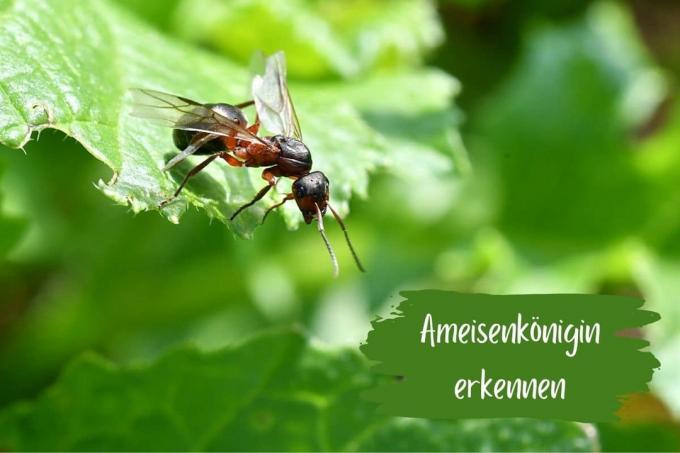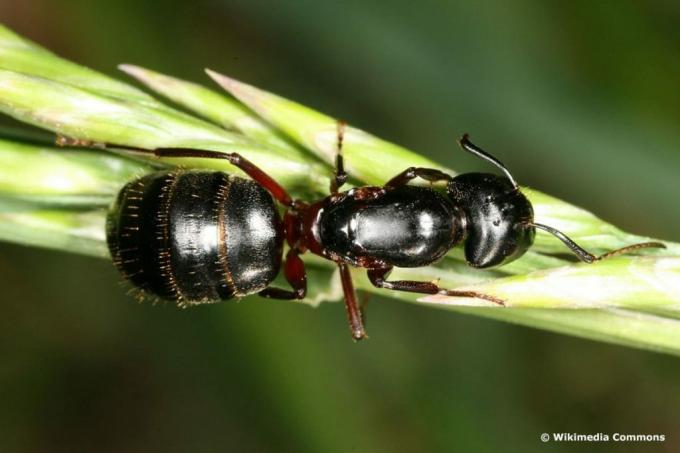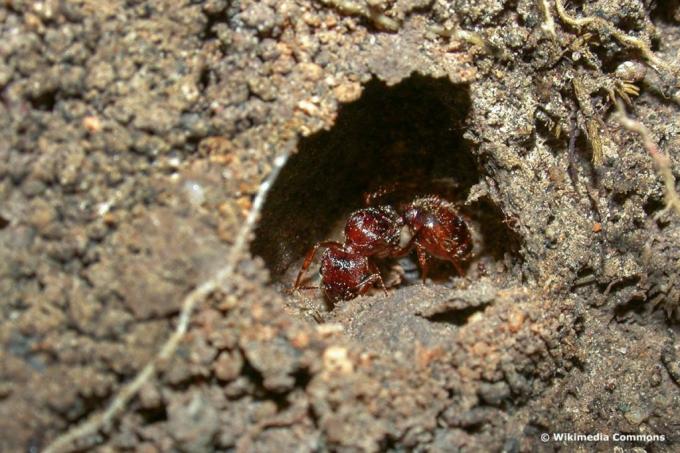
table of contents
- Characteristics of a queen ant
- Time of discovery
- Role in the ant colony
- Often several queens
- frequently asked Questions
Ants are fascinating creatures and can be found almost everywhere on earth. They live in large ant colonies, each of which has its own tasks. But how can you recognize the queen?
In a nutshell
- Ant queen has the highest rank in the ant colony
- has a distinctive appearance and special tasks
- mainly recognized by their size
- usually not just one queen ant per colony
- several features distinguish it from other ants
Characteristics of a queen ant
The most important differentiator is the size of the queen. Usually this also differs significantly from that of the infantry. But if you only determine the differences in size, you should also determine the respective size Ant species consider. In the case of the wooden ant, for example, the size of the workers varies so that it is easy to mistake a worker for a queen. But the queen ant also has other distinctive features.

- Body divided into head, thorax and abdomen
- Thorax (rib cage) larger and more massive than other parts of the body
- also wider and more voluminous than the head
- Queen is born with wings on her rib cage
- carries them to mating
- then they are thrown off
- instead of the wings only small wing stubs can be seen (queen hump)
- Queens can live to be 20 years and older
- Female workers from a few months to three years
- Queen about twice as tall as worker women
Tip: Queen ants that lose their wings before their mating flight (mating flight) cannot be mated. You then have to fight for a new rank in the ant colony.
Time of discovery
Ants are active in the warm months and start building their nests from April / May. The queens themselves spend most of their lives within the Nest. They are very rarely seen outside. One of the few exceptions is the time of the so-called mating flight (wedding flight) when they mate and are looking for a new home.

The timing and duration of the wedding flight can vary from type to type. Special swarm flight tables provide information about the exact time periods. With the help of these tables, the time span in which the queen ant is visible can be clearly limited. At all other times, queen ants are less likely to be seen.
Role in the ant colony
As already mentioned, the queens are the heads of an ant colony, which they also found from scratch and are also responsible for rearing the workers. Right from the start, the queen is destined to lay eggs and thus ensure the continued existence of the ant colony.
- Mating takes place on a so-called wedding flight
- then looks for a suitable place to found a colony
- their only job from now on is to produce ants
- Both workers and males and future queens
- young queens develop from fertilized eggs
- the males from the unfertilized
- Queen produces around 100 eggs per day
- in the entire season approx. a million
Tip: Brood care, nest building, foraging, defense and care of the queen is the sole responsibility of the workers.
Often several queens
One or more queens can live in an ant colony. The latter are known as polygynous states and can house dozens of queens.

- The number strongly depends on the type of ants and environmental conditions
- some species kill all other queens except for one
- possible in other power struggles among the queens
- some take over existing colonies (socially parasitic queen)
- Workers then only care for their brood
- or they kill the intruder
frequently asked Questions
States with only one queen usually only live as old as the queen. If it dies, the colony dies too, because there is no longer any oviposition. If there are several queen ants, states can exist much longer, around 50 to 80 years.
While the queen only wears wings until mating, the male ants of most species have wings permanently.
An ant colony living together in one state can consist of up to a million animals, depending on the species. There are species with only about a dozen animals, but also such as the great red wood ant with 300,000 to 600,000 animals.

